Bordighera is a charming village, also called the city of Palms, next to it’s mondain big sister: San Remo. After talking to Antonella, the very passionate ‘ragazza’ at the tourist information desk, we decided to visit the Villa Garnier (I must say that I’m an absolute fan of the Opera Garnier in Paris, so I was excited)
It was quite a climb, but absolutely worth to see the magnificent villas and the beautiful views in the Via Romana. All of the gorgeous villas differ in style, but all date from the ‘belle époque period’ and were built as Mediterranean summer residences for wealthy families. In Europe there has since long been the tradition for royalty and aristocracy to spend the holiday season at the French or Italian Riviera.
The villa Garnier was opened at the dot of 2pm by a charming nun. Now about the villa and about Charles Garnier:
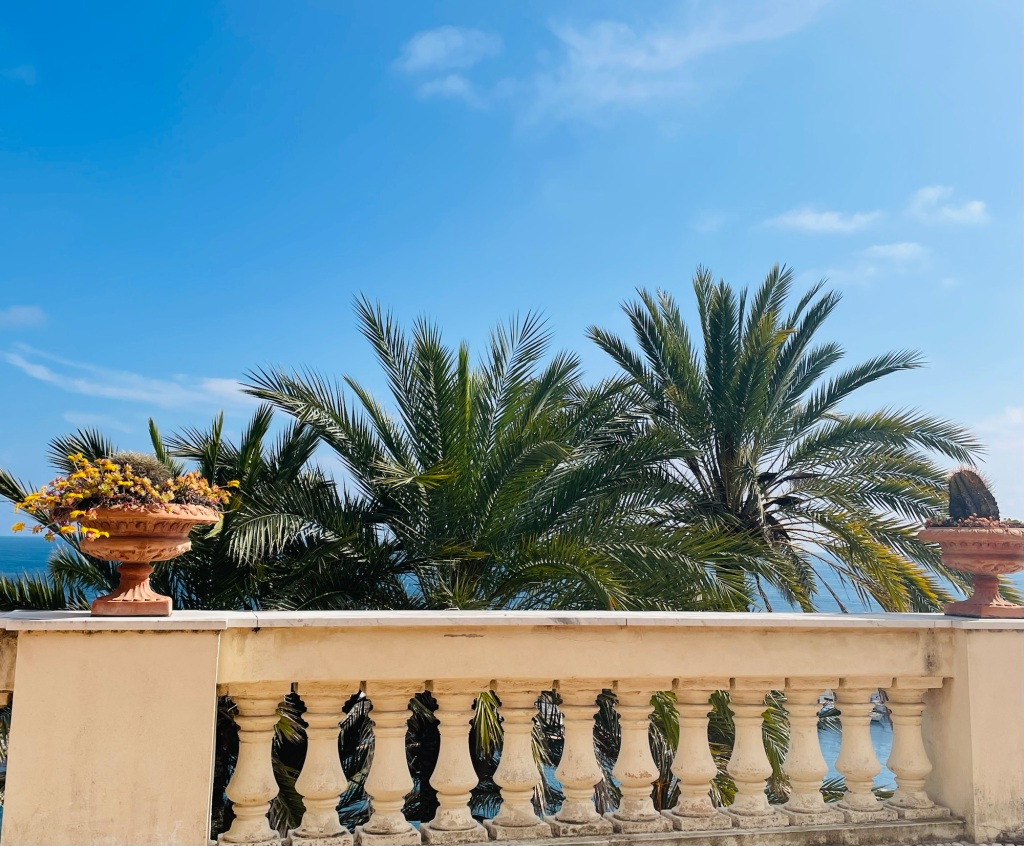



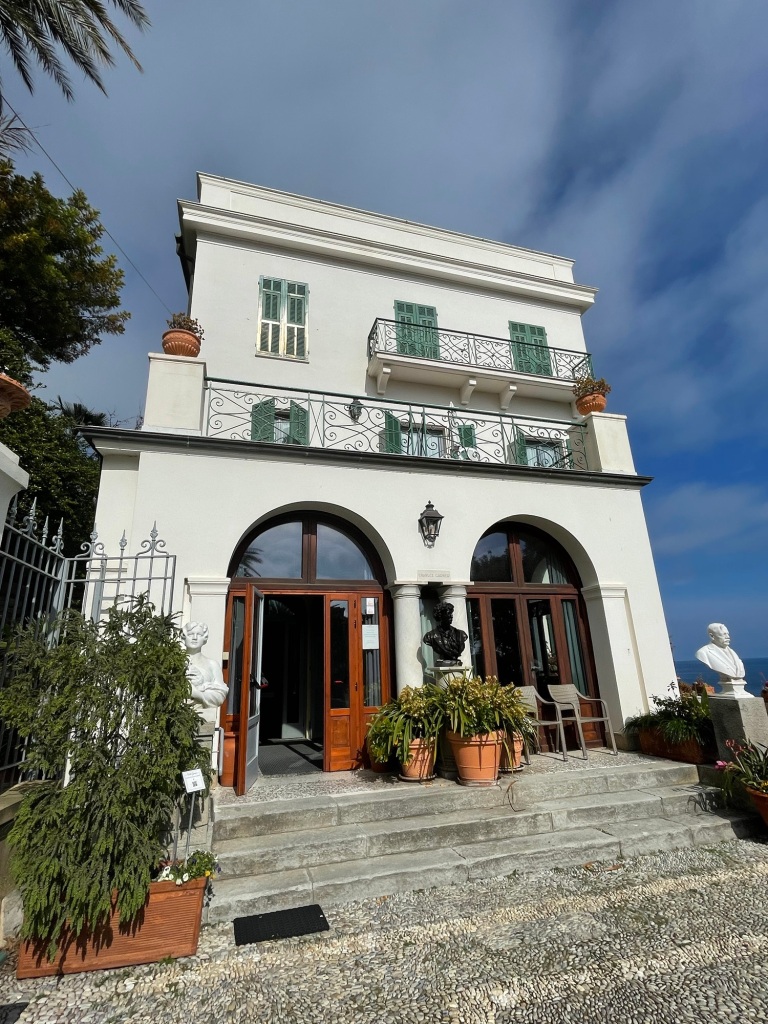
Born in Paris in 1825, Charles Garnier, having studied architecture under his mother’s guidance, developed a highly individualistic style emblematic of the Napoleon III era.
Monsieur Garnier’s encounter with Bordighera in 1864, during a stay in Menton, mirrored the infatuation experienced by another French luminary, Claude Monet. In 1872, the architect acquired a lush palm grove, transforming it into a botanical garden around the Chapel of San Sebastiano.
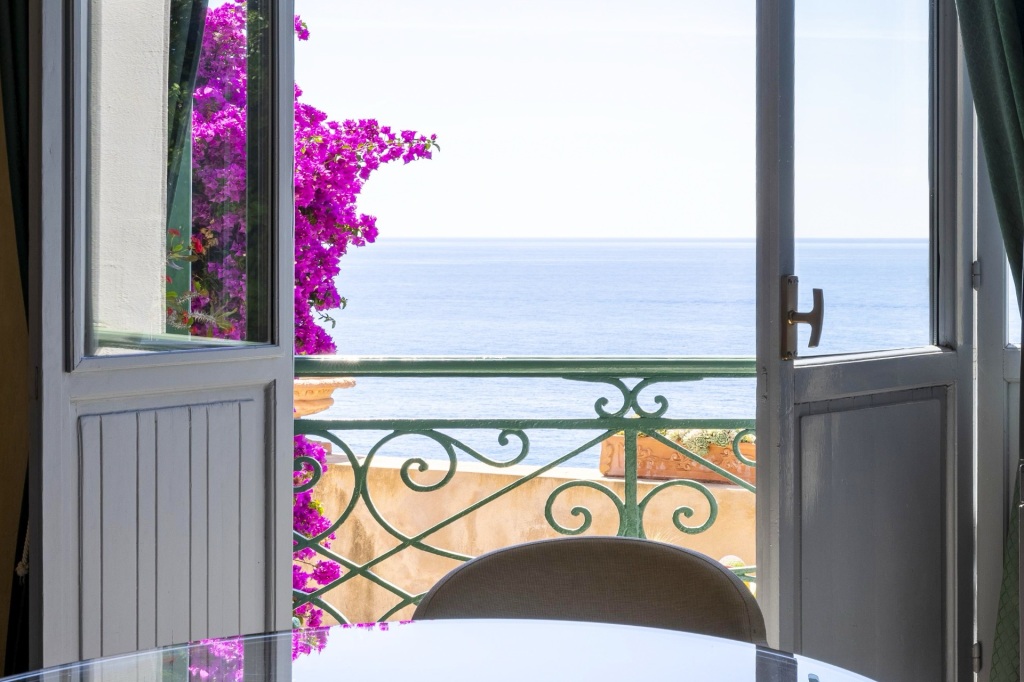
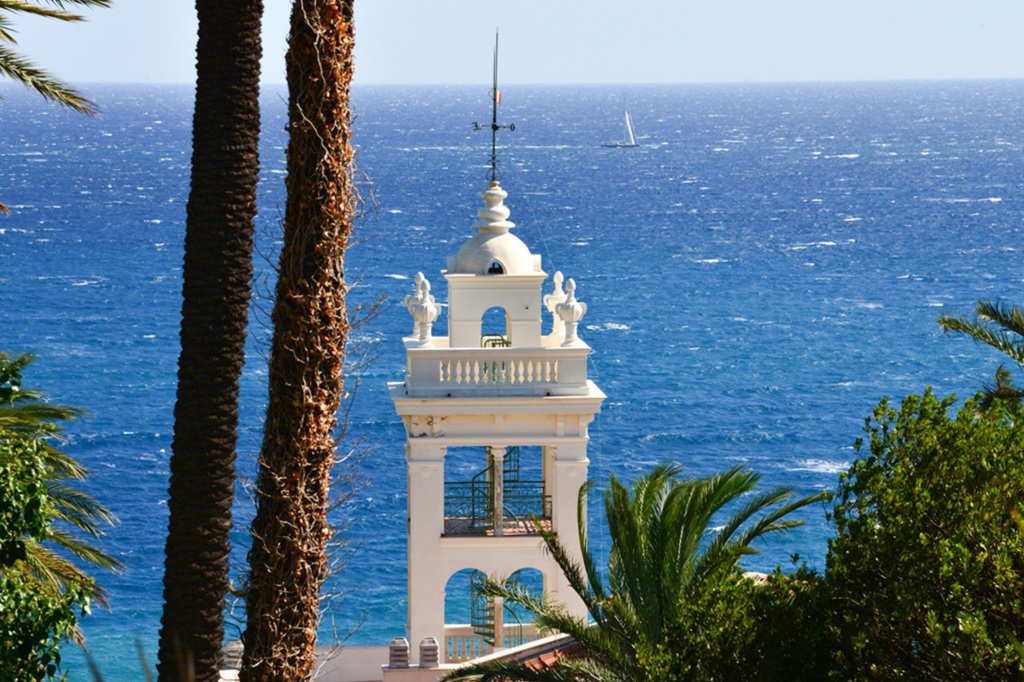

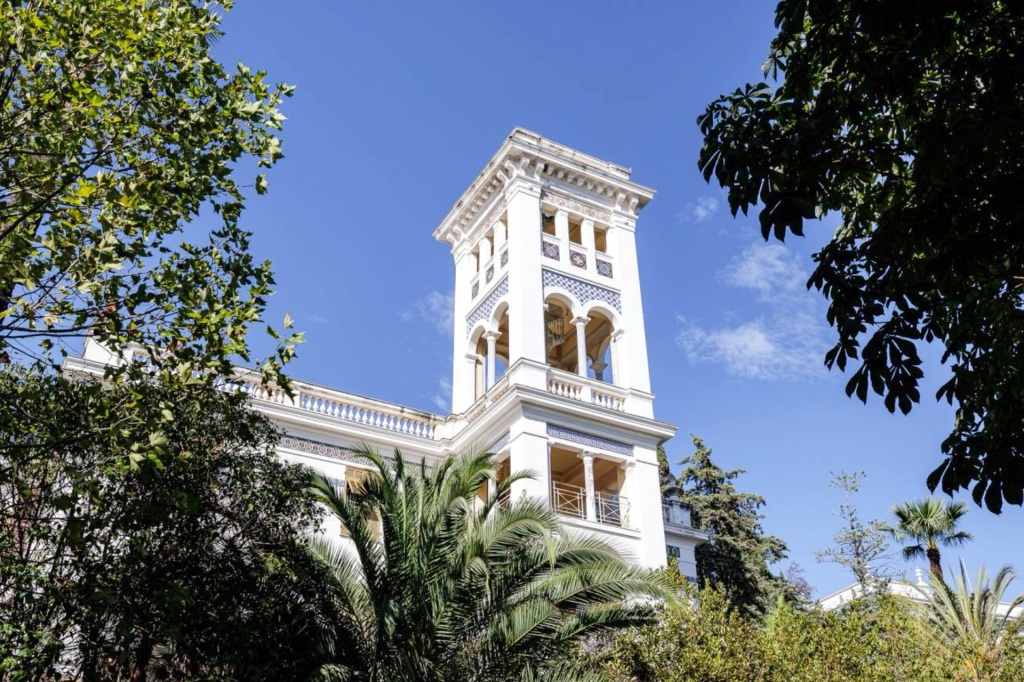
This site later became one of Bordighera’s most beautiful villas – Villa Garnier. Today, Villa Garnier stands as vacancy retreat in Bordighera, boasting rooms within a period structure, a prestigious botanical garden, and a terrace with a sea view just minutes from the beach.
The entrance to Villa Garnier is marked by rich frescoes and drawings contributed by various artists, including Lenepveu, Meissonier, Boulanger and Clairin – all friends and guests of the architect. The reading room preserves the delicacy of hand decorations, adorned with medallions depicting living animals, reflecting the aesthetic taste of Garnier.



The dining room features a ceiling adorned with elegant floral decorations and a magnificent octagonal fresco by Baudry, depicting two angels in a captivating scene. The walls of the stairs leading to the upper floors showcase geometric patterns, seamlessly integrating artistic touches with the overall architectural context of Villa Garnier.
A bit further was also the villa Etelinda. The villa was bought by Lord Claude Bowes-Lyon, 14th Earl of Strathmore and Kinghorne, who changed its name from villa Bischoffsheim to Villa Etelinda to honour the success obtained by his sister Mildred Marion Bowes-Lyon with her opera “Etelinda”. unfortunately is was closed. But this villa seduced illustrious personalities such as the microbiologist Louis Pasteur and the Queen of Italy Margherita di Savoia, who were guests, and once again the famous impressionist Claude Monet, who represents “the sister” of Villa Garnier in a famous painting is ‘Les villas de Bordighera » in the Musée d’Orsay in Paris.
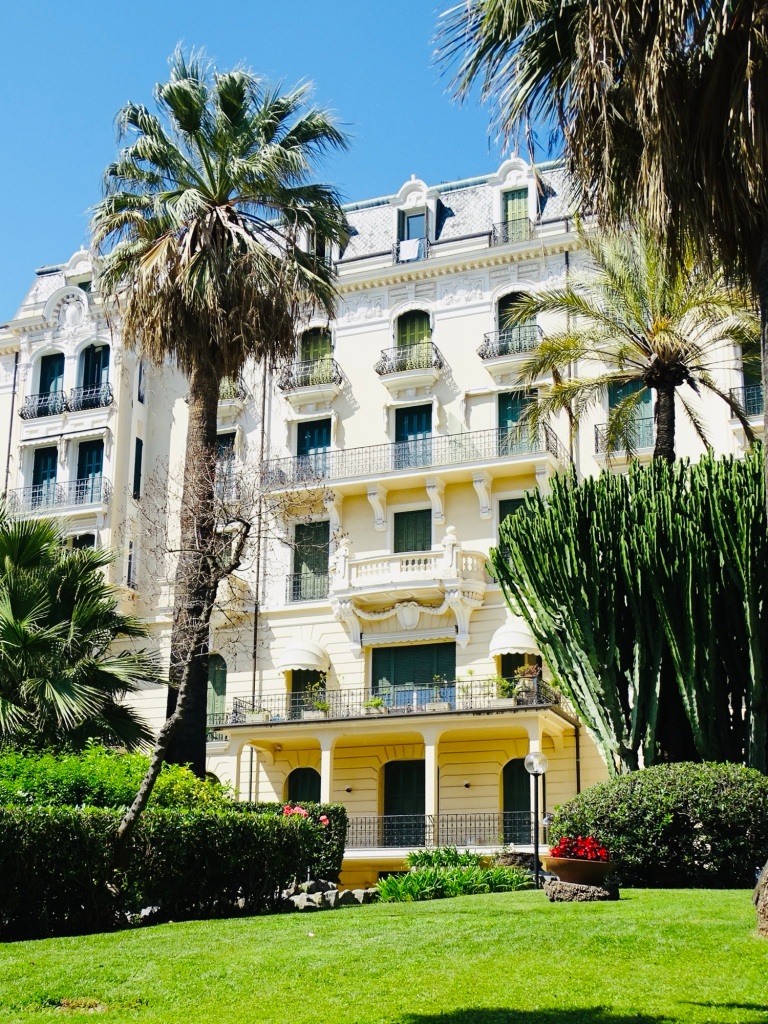

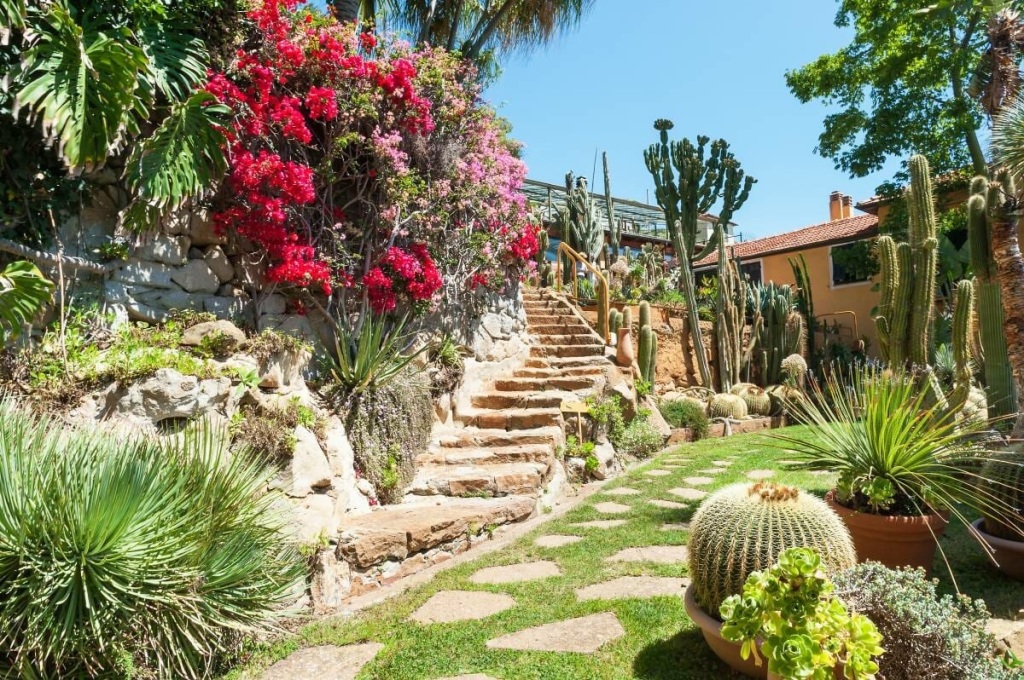

Monet also searches for the southern light, the harsh whites and bright light blues which unify the tamed elements of garden and town with the indomitable merging colours of sky and mountains. Painting the Corniche de Monaco, Monet could not resist the siren call of Bordighera. In 1883 Monet and Auguste Renoir were searching Bordighera for new, paintable landscapes. Monet returned alone the following year, and painted more than forty views of the area, the town and its gardens. His energy was ferocious; at first he worked on four canvases each day, and between 24 January and 2 February 1884 he reportedly completed fourteen. The shimmering golden pinks and blues seemed almost incredible.
Now I understand why people love this delightful seaside town on Italy’s Ligurian coast where the Alps plunge into the Mediterranean. It is just a quick jump from Monaco and when you see it from the hills it seems blessed by a special aura
Garnier liked to say about Bordighera: “… Is there something more distinctive, more Eastern, more ‘One Thousand and One Nights’?”
You can read more on Bordighera here

